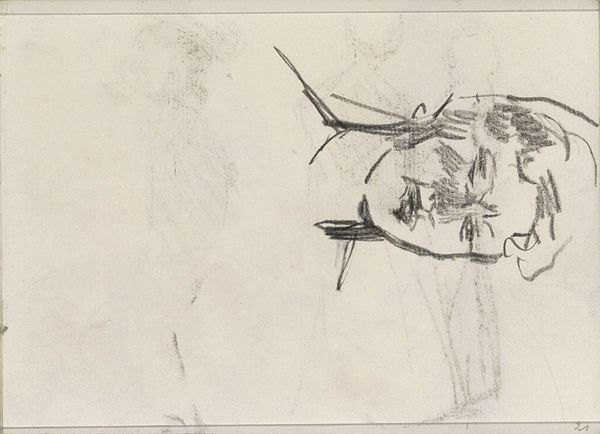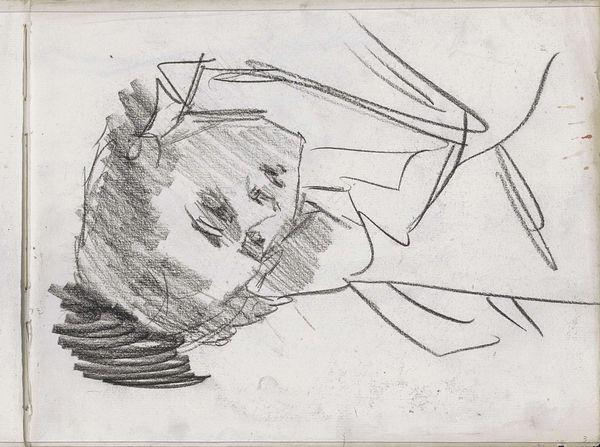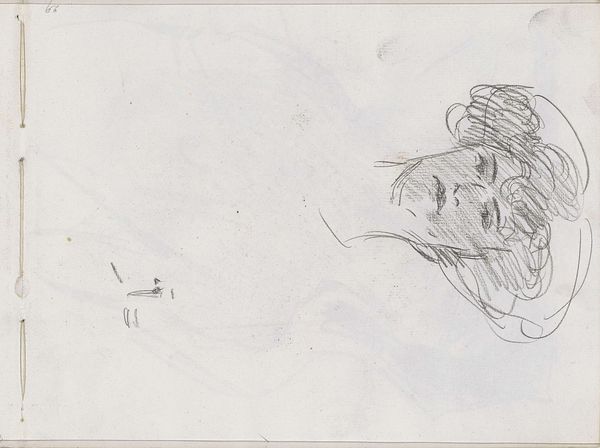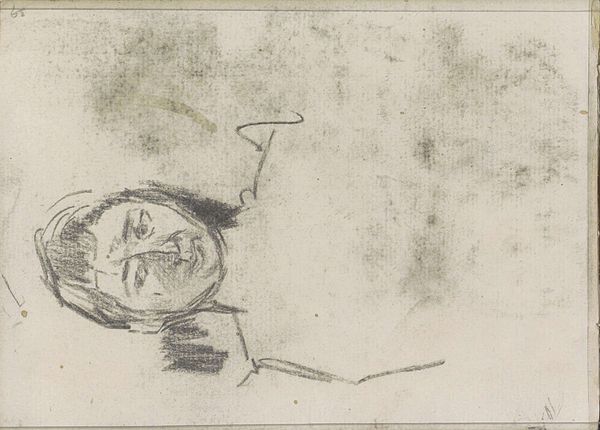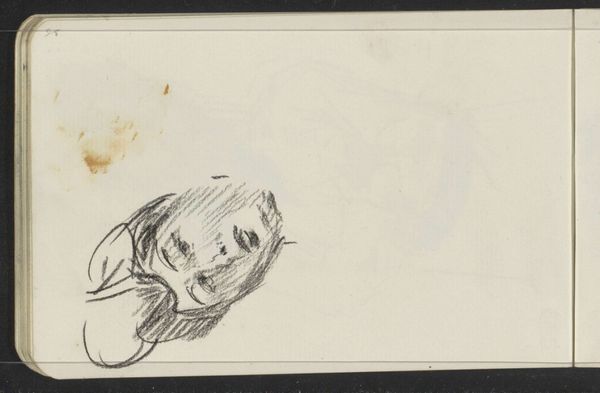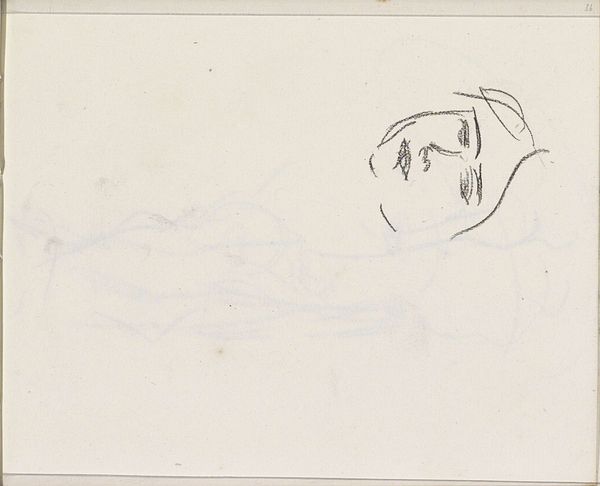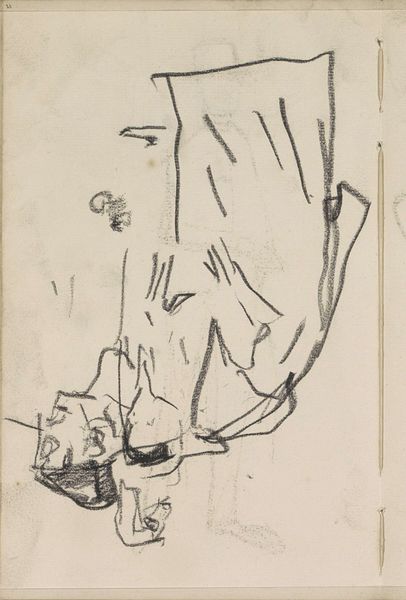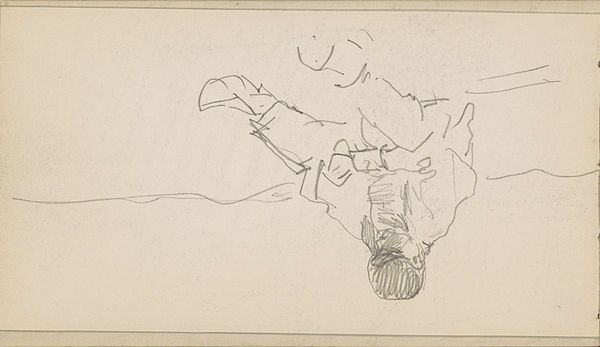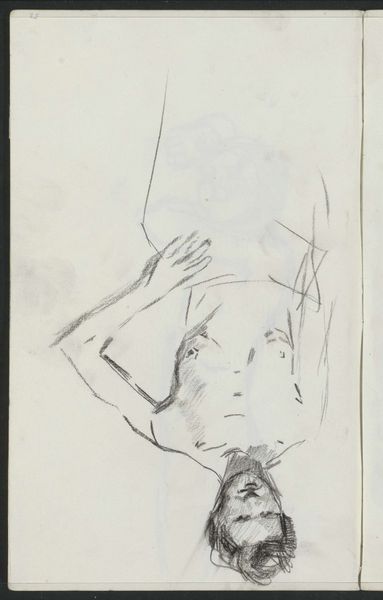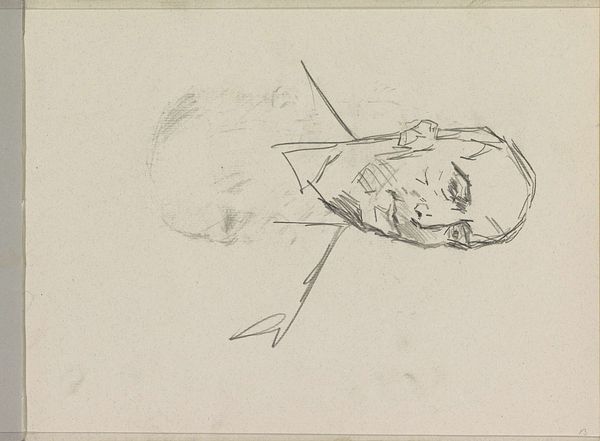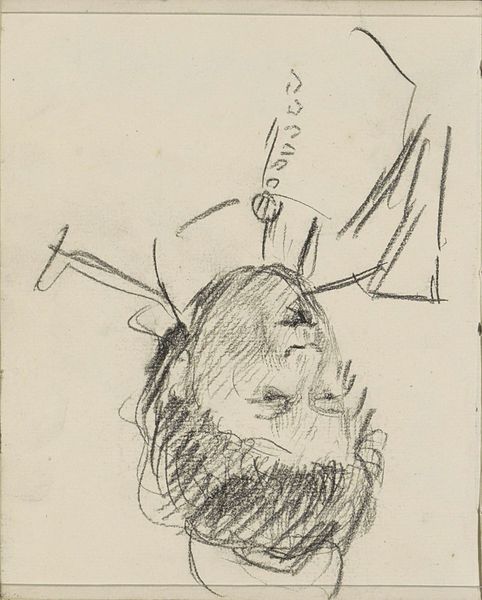
Copyright: Rijks Museum: Open Domain
Curator: Isaac Israels created this drawing, titled "Vrouwenhoofd," sometime between 1875 and 1934. It’s now part of the Rijksmuseum's collection. Editor: It strikes me as such a fleeting impression, almost ghostly, just emerging from the paper's surface. There's a haunting vulnerability. Curator: I agree. Look at the economy of line—the bare minimum needed to define the essential forms. The hatching technique around the face, particularly around the nose, really models the planes. Editor: I find it compelling how this unfinished quality invites speculation about her identity. Was this a commissioned portrait, or a quick sketch of someone he observed? Considering the era, I can’t help but think about the limited representation of women artists at the time and I find myself wanting to know her story. Curator: The style certainly aligns with Impressionist principles—capturing a momentary, subjective view. Notice how the composition isn’t concerned with realistic proportion; the focus is on the play of light and shadow, creating an emotional immediacy. It’s very much about optical sensation rather than detailed representation. Editor: Perhaps that immediacy also stems from the constraints placed upon women’s presence and visibility, broadly speaking, during this time. Maybe it mirrors the social constraints put upon the subject? Curator: A compelling argument! It pushes the boundaries of the formal study. Considering it's just pencil on paper, the range of tonal values is impressive. Israels truly manipulates the medium to evoke depth and emotion. Editor: Exactly, I appreciate your reading of how depth and emotional depth become linked here; for me it brings out the historical position of female sitters whose own depths are all too frequently flattened out into pure surface. Curator: Yes, but I think its brilliance comes from the skillful orchestration of line, tone and texture, all to evoke an emotive experience! Editor: In the end, I am drawn to how its openness provokes an unexpected empathy with this anonymous subject. Curator: Indeed, whether focusing on form or context, this drawing leaves a strong impact.
Comments
No comments
Be the first to comment and join the conversation on the ultimate creative platform.
